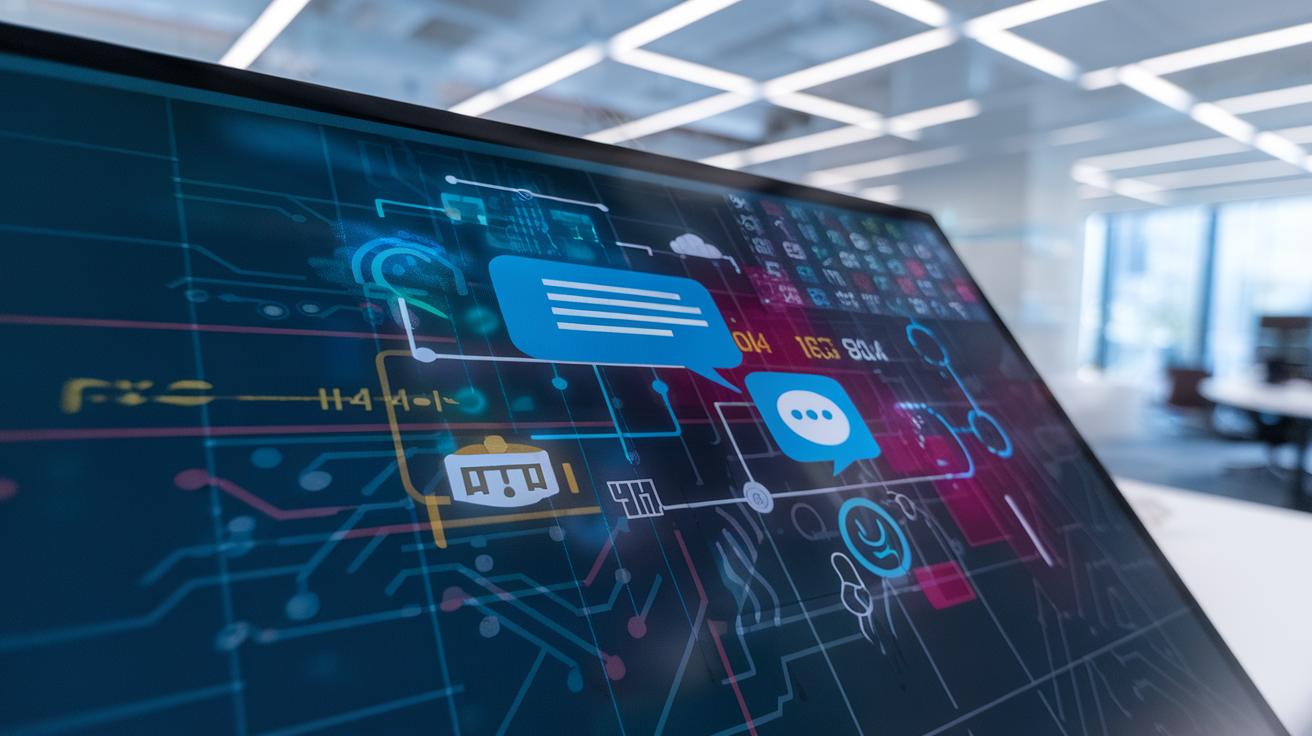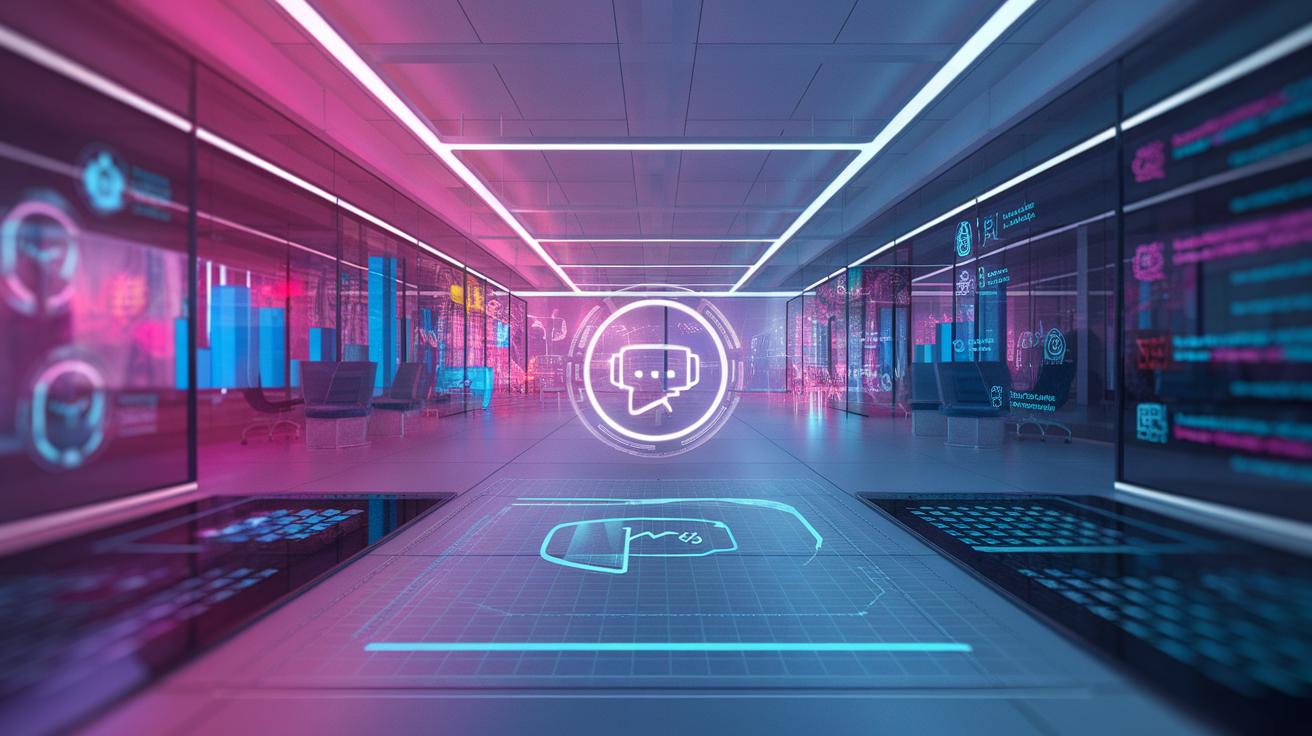Introduction
The digital landscape is rapidly evolving, and businesses are recognizing the need for enhanced customer engagement tools, such as chat widgets. This comprehensive guide aims to provide you with a complete understanding of chat widgets, exploring their functionalities, benefits, and implementation strategies. By effectively utilizing chat widgets, businesses can foster real-time communication, boost customer satisfaction, and drive conversions seamlessly on their websites.
This guide will navigate through various aspects of chat widgets—from their basic structure and key features to advanced customization options that enhance user experience. Additionally, we will discuss integration with AI technologies and how to optimize chat widget performance. Armed with insights and practical tips, businesses can leverage chat widgets to create a robust customer service framework that aligns with modern user expectations.
Understanding Chat Widgets Key Functionalities and Types
Chat widgets are interactive tools embedded into websites, allowing real-time communication between businesses and their customers. These mini applications are designed to enhance user experience by facilitating instant messaging and providing immediate support. Their core functionalities include text-based chat, multimedia sharing, and integrations with CRM systems, making them indispensable for businesses seeking effective customer engagement.
There are various types of chat widgets available, each catering to specific needs and use cases. Live chat widgets are the most common, allowing businesses to connect with visitors in real-time. They are particularly useful for online retailers, where immediate assistance can influence purchasing decisions and enhance the overall shopping experience. These widgets often feature chat history, enabling customers to view past interactions easily.
Another type is the chatbot widget, which employs artificial intelligence to provide automated responses to frequently asked questions. Perfect for online service companies, they can operate 24/7, ensuring that inquiries are addressed even outside of business hours. Chatbots can handle multiple conversations simultaneously, increasing efficiency and freeing up human agents for more complex issues.
Social media widgets integrate platforms like Facebook Messenger or WhatsApp into a website, allowing visitors to communicate through their preferred channels. This type of chat widget is advantageous for businesses that have substantial followings on social media as it creates a seamless communication channel that encourages engagement and strengthens brand loyalty.
FAQ widgets serve another important function by addressing common customer concerns without human intervention. These are particularly beneficial for organizations with extensive product lines where customers might have repeated queries about features or policies. By providing pre-set answers, businesses can enhance user satisfaction while minimizing staff workload.
Chat widgets are versatile tools that facilitate effective customer interaction. Understanding the various types of chat widgets helps businesses select the right solution tailored to their unique engagement goals, contributing significantly to improved customer experience and satisfaction.
Benefits of Chat Widgets for Businesses Enhancing Customer Engagement and Satisfaction
Driving Engagement through Instant Communication
Chat widgets have become invaluable tools for businesses striving to enhance customer engagement. Their primary function lies in providing instant communication channels that facilitate real-time interaction between customers and service providers. This immediacy significantly transforms the customer experience by allowing users to seek assistance or information without the delays often associated with traditional communication methods, such as email or phone calls. Customers appreciate the ability to receive answers promptly, thereby increasing their overall satisfaction and boosting engagement with the business.
By incorporating chat widgets, businesses can benefit from a streamlined way to answer frequently asked questions or resolve issues on the spot. This leads to a reduction in customer inquiries, as efficient responses build trust and confidence in the brand. Consequently, customers are more likely to engage deeply and purchase, knowing that help is readily available.
Improving Customer Satisfaction with Personalized Interactions
Another significant advantage of chat widgets is their capacity to offer personalized service. Unlike generic email responses, chat widgets can be designed to initiate personalized conversations based on user data or browsing behavior. For example, when a visitor arrives at a website, a chat widget can greet them with tailored messages, suggesting products or services that align with their interests. This personalized touch not only enhances the customer journey but also fosters a sense of belonging and loyalty towards the brand.
Employing artificial intelligence within chat widgets enables businesses to provide 24/7 support, effortlessly assisting customers outside of standard business hours. This not only increases accessibility but also heightens the likelihood of customer retention and satisfaction, as clients appreciate continuous support. Combined with human oversight, chat widgets can engage customers on a higher level, addressing their needs accurately and promptly.
Chat widgets can assist in gathering valuable feedback from customers post-interaction. By understanding customer experiences through quick surveys or satisfaction ratings, businesses can identify areas for improvement and adjust their strategies accordingly. This feedback loop not only amplifies customer satisfaction but also empowers businesses to fine-tune their engagement efforts and service offerings further.
The integration of chat widgets significantly enhances customer engagement and satisfaction. By facilitating real-time communication and enabling personalized interactions, businesses can cultivate a more robust connection with their clientele, ensuring a favorable experience that encourages loyalty and sustained engagement.
Choosing the Right Chat Widget for Your Website A Guide to Enhanced Customer Engagement
Identifying Your Business Needs
When selecting a chat widget for your website, the first step is to evaluate your specific business needs. Consider the nature of your business, the volume of customer inquiries, and the types of support you intend to offer. For example, if your business operates primarily online retail, you will need a widget capable of handling transaction-related questions. On the other hand, a service-based business may focus on scheduling and appointment inquiries. Gauging the types of interactions you expect can significantly inform your choice of features.
Another important aspect to assess is your target audience. Understanding your customers’ preferences and behaviors will help you select a chat widget that resonates well with them. If your clientele is younger and tech-savvy, they may appreciate a chat widget with advanced capabilities such as video chat or file sharing.
Key Features to Consider
Once you have outlined your business needs, turn your attention to the features that various chat widgets offer. Here are some crucial elements to contemplate:
- Customization Options: Look for a chat widget that allows you to customize its appearance and functionality. Aligning it with your brand can strengthen your overall customer experience.
- Integration Capabilities: Ensure that the widget can seamlessly integrate with existing tools, such as your CRM system, email platform, or other customer service software.
- Analytics and Reporting: Choose a chat widget that provides insights into customer interactions. Analytics can help you understand user behavior and improve your service strategies.
- Multiple Channel Support: A widget that operates across various platforms—like social media and mobile devices—can enhance your customer engagement efforts.
Assess the pricing models of different chat widgets. Many platforms offer free versions with limited features, which may suffice for small businesses. However, be prepared to invest in a paid version as your business grows and requires more sophisticated functionalities.
The right chat widget should align with both your current business needs and future growth plans. By undertaking a thorough evaluation of features and functionalities, you will better position your business to enhance customer interactions, fostering satisfaction and loyalty.
Setting Up Your Chat Widget for Free Website Chat Success
Step-by-Step Guide to Implement Your Chat Widget
Setting up your chat widget is a fundamental step in enhancing customer engagement on your website. Follow this step-by-step guide to ensure a seamless and efficient installation process that maximizes chat functionality.
1. Select Your Chat Widget Code: After choosing your chat widget based on your specific needs, locate the installation code. This is usually available in the chat widget provider’s dashboard. The code typically consists of a JavaScript snippet.
2. Access Your Website’s Code: Use a code editor or your content management system (CMS) to access the HTML of your website. If you are using a platform such as WordPress, you may find a designated area to insert custom scripts in the settings.
3. Paste the Script: Insert the chat widget code before the closing tag in your website’s HTML. This placement helps ensure that the page loads properly without delaying the display of other content.
4. Customize Appearance and Settings: Most chat widgets allow you to modify their appearance and set initial parameters. Adjust color schemes to match your branding, choose a welcome message, and define availability hours to align with your customer service schedule.
5. Mobile Responsiveness Check: Ensure that the chat widget is mobile-friendly. Test the widget on various devices including smartphones and tablets to verify that it displays correctly and functions without any issues.
6. Test Functionality: After installation, conduct thorough testing. Try sending messages to ensure that they are received and promptly answered. Check all features such as chat history, file sharing, and integration with other tools if applicable.
Best Practices for Effective Implementation
While the steps above are essential, adopting best practices significantly enhances chat interaction quality. First, provide training for your team on how to use the chat widget effectively. This training should include responding to customer inquiries, managing conversations, and recognizing when to escalate issues.
Establish FAQ responses for common customer queries to facilitate quick replies. Also, consider leveraging chatbot technology for initial interactions, allowing your support agents to focus on more complex issues.
Regularly monitor and analyze chat interactions. Evaluating engagement metrics will help you understand customer behavior and enhance your chat strategies, ensuring maximum benefit from your chat widget.
Optimizing Chat Widget Performance Strategies for Seamless User Experience
To ensure that chat widgets function at their best, businesses must focus on optimizing performance. A well-performing chat widget can significantly enhance user experience, which in turn, can lead to increased customer satisfaction and conversion rates. There are several strategies to consider when aiming for optimal performance of your chat widget.
User-Centric Design
The design of a chat widget plays a pivotal role in its effectiveness. Focus on a user-centric design that is intuitive and visually appealing. Use colors that align with your brand but also ensure good readability. Consider the placement of the widget on your website; it should be easily noticeable without being intrusive, usually in the bottom corner of the screen. A floating widget allows users to engage without disrupting their browsing experience. Using clear and concise language in the chat prompts will ensure that users understand what actions they can take.
Speed Optimization
Loading time is a crucial aspect of a chat widget’s performance. If the widget takes too long to load, users are likely to abandon it. Optimize code snippets to ensure that they are lightweight and efficient. Compress images and assets included in the widget to reduce their loading times. Additionally, ensure that your web hosting platform can adequately support traffic, especially during peak times. Leveraging content delivery networks (CDNs) can enhance loading speed by serving content from the nearest server to the user.
Smart Automation
Integrating automation features, such as chatbots, can also significantly improve performance. Chatbots can handle frequently asked questions, enabling faster responses and reducing wait times for users. However, it is vital to implement a system that smoothly transitions from bot to human agents when queries become more complex. This hybrid approach enhances user experience, ensuring users get timely assistance while maintaining a personal touch.
Ongoing Testing and Iteration
Another vital strategy is ongoing testing and iteration of your chat widget. Utilize A/B testing to compare different widget designs and functionalities. Analyze user interactions and collect feedback to identify areas for improvement. Iterative updates based on user data and trends will help in fine-tuning the chat widget, ensuring that it meets the evolving needs of your audience.
By implementing these performance optimization strategies, businesses can create chat widgets that not only enhance user experience but also drive higher engagement and conversions on their websites. In the next chapter, we will discuss how to measure the success of these chat widgets through key metrics and KPIs.
Measuring Chat Widget Success Key Metrics and KPIs
Understanding the Importance of Metrics
In order to fully harness the potential of chat widgets for effective customer engagement, businesses should prioritize the measurement of their performance. Identifying and tracking specific metrics and Key Performance Indicators (KPIs) is vital for understanding how well chat widgets facilitate communication and satisfaction among users. Assessing these elements allows businesses to gain actionable insights, leading to optimized user experiences and enhanced overall engagement.
Essential Metrics to Track
When it comes to evaluating chat widget success, several critical metrics come into play:
- Response Time: This measures the average time it takes for an agent or automated system to respond to an inquiry. A shorter response time typically correlates with a more satisfactory customer experience.
- Engagement Rate: This reflects how often users initiate conversations via the chat widget compared to the total number of visitors. A high engagement rate suggests that the chat widget effectively captures interest and encourages participation.
- Conversion Rate: The conversion rate assesses how many chat interactions lead to desired actions, such as purchases or sign-ups. Tracking this metric reveals the chat widget’s impact on achieving business goals.
- Customer Satisfaction Score (CSAT): Post-chat surveys can provide valuable feedback about customers’ satisfaction levels. Collecting this data helps businesses gauge the overall effectiveness of their chat support.
- Net Promoter Score (NPS): This measures the likelihood that customers will recommend your services based on their chat experience. High NPS values typically indicate satisfaction and loyalty.
- Abandonment Rate: The percentage of users who leave the chat before receiving assistance can signal issues with responsiveness or user experience. Monitoring this helps identify areas needing improvement.
The integration of these metrics into a structured evaluation process can yield comprehensive insights that drive improvements in chat widget performance. By analyzing data patterns over time, businesses can make informed adjustments to their chat strategy, boost user satisfaction, and ultimately promote a more engaging customer journey.
As companies prioritize measurement in their chat initiatives, they not only refine their communication strategies but also prepare to embrace the future trends shaping chat technology and customer engagement. Understanding how well chat widgets serve their intended purpose sets the stage for evolving capabilities, advancing both customer interaction and business success.
Future Trends in Chat Widget Technology Shaping Customer Engagement
Innovative Features on the Horizon
As technology advances, chat widgets are evolving rapidly to meet the changing demands of businesses and their customers. One significant trend is the incorporation of artificial intelligence and machine learning capabilities. These technologies enable chat widgets to provide more personalized and efficient responses. By analyzing user interactions and preferences, chat widgets can tailor conversations based on previous interactions, leading to enhanced customer satisfaction.
Another exciting development is the integration of multimedia functionalities. Chat widgets are not limited to text anymore; they can now support images, videos, and even voice messages. This shift allows businesses to engage customers more dynamically, making the chat experience not only more interactive but also more informative. Providing visual aids or video explanations can help in addressing customer queries more effectively.
Omnichannel Support and Seamless Integration
Future chat widgets are likely to focus on omnichannel support, allowing seamless transitions between different communication platforms. Businesses will benefit from tools that enable chat conversations to continue across various channels, such as social media, websites, and mobile apps. This enhanced connectivity ensures that customers have a consistent experience, no matter where they choose to interact.
Integration with CRM systems and other third-party applications will empower businesses to leverage customer data better. This data-driven approach helps in anticipating customer needs and addressing them proactively, further enhancing customer engagement initiatives.
Chatbot Evolution and Natural Language Processing
Natural Language Processing (NLP) is another key area of development, allowing chatbots to understand and respond to human language more effectively. With improved NLP capabilities, chat widgets will interact with customers in a more conversational manner, making the experience feel less robotic. This evolution will drive higher engagement rates, as customers appreciate interactions that mimic genuine conversations.
The future may also hold advancements in sentiment analysis, where chat widgets can gauge customer emotions based on text inputs. This feature would enable businesses to modify their responses dynamically, ensuring that they address customer frustrations promptly or enhance positive interactions.
As chat widget technology continues to advance, companies must stay informed of these trends to optimize their chat solutions. By embracing these future innovations, businesses can significantly enhance their customer engagement strategies and foster long-lasting relationships with their audiences.
Conclusions
Mastering the use of chat widgets is vital for businesses looking to thrive in an increasingly competitive online environment. By implementing the strategies discussed, businesses can significantly enhance user interaction, solve problems efficiently, and ultimately drive sales. An effective chat widget not only provides timely support but also strengthens brand loyalty by making customers feel valued.
As technology continues to evolve, keeping pace with advancements in chat widgets and their integrations will ensure your business remains at the forefront of customer service excellence. By embracing these tools, companies can transform the customer experience, making every interaction count in achieving long-term success.




















